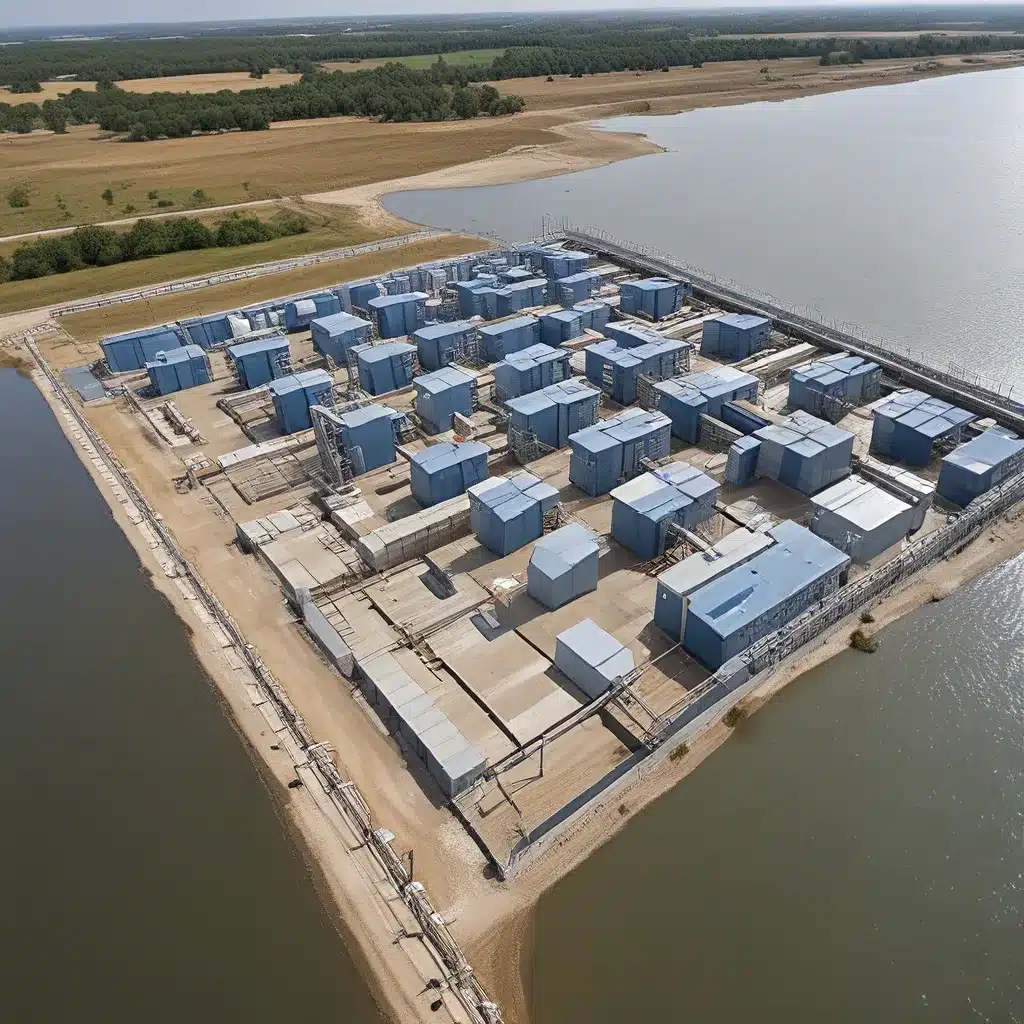
As the world grapples with the increasingly erratic and unpredictable nature of our water resources, it’s become clear that traditional water storage and management solutions are no longer enough. The need for innovative approaches to enhancing water resilience has never been more pressing.
From my vantage point as an environmental enthusiast and self-proclaimed water warrior, I’ve been closely following the advancements in water storage technology. And let me tell you, the future is looking a whole lot wetter – in a good way, of course.
Confronting the Water Resilience Challenge
The Biden-Harris administration has made a bold move by investing $179 million in innovative solutions to help communities become more resilient in the face of water-related challenges. This is a clear acknowledgment that the old ways of doing things simply aren’t cutting it anymore.
Think about it – climate change is wreaking havoc on our water supply, with droughts, floods, and unpredictable precipitation patterns becoming the new normal. And let’s not forget the ever-growing demand for water from our thirsty cities, farms, and industries. It’s a perfect storm of challenges that requires us to rethink how we store, manage, and distribute this precious resource.
Embracing Innovative Water Storage Solutions
Enter the world of innovative water storage solutions – a realm where cutting-edge technology and forward-thinking design are redefining the way we approach water resilience. These solutions aren’t just about building bigger dams or expanding reservoirs; they’re about creating smart, integrated systems that can adapt to the changing tides of our water needs.
The Biden-Harris administration has recognized the importance of these innovative approaches, and they’re not the only ones. Across the globe, engineers, scientists, and visionaries are coming up with game-changing ideas that are making waves in the water management industry.
Subterranean Storage: The Stealth Solution
One of the most intriguing water storage innovations that’s been capturing my attention is the concept of subterranean storage. Now, I know what you’re thinking: “Underground water storage? Isn’t that just a glorified well?” Well, my friends, let me tell you, this is so much more than that.
Imagine a vast network of underground reservoirs, strategically placed to capture and store excess water during wet seasons. These subterranean storage systems aren’t just passive receptacles; they’re actively managed, with sophisticated sensors and control systems that can optimize the storage and release of water based on real-time conditions.
Studies have shown that this approach can significantly enhance water resilience, providing a reliable source of water during dry spells and reducing the strain on surface-level reservoirs and aquifers. It’s a win-win for both the environment and our water infrastructure.
Floating on Solutions: The Buoyant Promise
But wait, there’s more! Another innovative water storage solution that’s got me all kinds of excited is the idea of floating reservoirs. Imagine massive, inflatable storage tanks that can be deployed on lakes, rivers, or even the open ocean, expanding our water storage capacity without the need for costly and environmentally disruptive land-based infrastructure.
These floating reservoirs can be designed to be modular, allowing for easy deployment and expansion as needed. And the best part? They can be powered by renewable energy sources, making them a truly sustainable solution for water storage.
Aquifer Recharge: Tapping into Nature’s Savings Account
Of course, innovative water storage solutions aren’t just about high-tech engineering marvels. Sometimes, the most effective solutions can be found in nature itself. That’s where aquifer recharge comes into play.
By strategically directing excess surface water into underground aquifers, we can replenish these natural storage systems and ensure a steady supply of groundwater for the future. This approach not only enhances water resilience but also helps to recharge depleted aquifers and prevent land subsidence – a growing problem in many water-stressed regions.
Inland Waters Inc., a leading water treatment and environmental services provider, has been at the forefront of aquifer recharge projects, working with communities to implement these nature-based solutions. Their expertise in managed aquifer recharge has helped to safeguard water supplies and ensure long-term sustainability.
Towards a Water-Resilient Future
As I delve deeper into the world of innovative water storage solutions, I can’t help but feel a sense of cautious optimism. These cutting-edge technologies and approaches hold the promise of transforming the way we manage our water resources, making our communities more resilient and our environment more sustainable.
Of course, I know that the path to a water-resilient future isn’t without its challenges. There are still technical hurdles to overcome, regulatory barriers to navigate, and the ever-present need for funding and political will. But I can’t help but be inspired by the ingenuity and dedication of the individuals and organizations working to make this vision a reality.
So, what’s the takeaway here? It’s simple: the future of water resilience is being shaped by innovative storage solutions that are rewriting the rules of water management. From subterranean reservoirs to floating tanks to aquifer recharge, the possibilities are endless.
And as for me, well, I’ll be right here, cheering on the water warriors and celebrating every drop of progress we make towards a more resilient and sustainable water future. After all, as the old saying goes, “When life gives you water, you’d better find a way to store it!”


